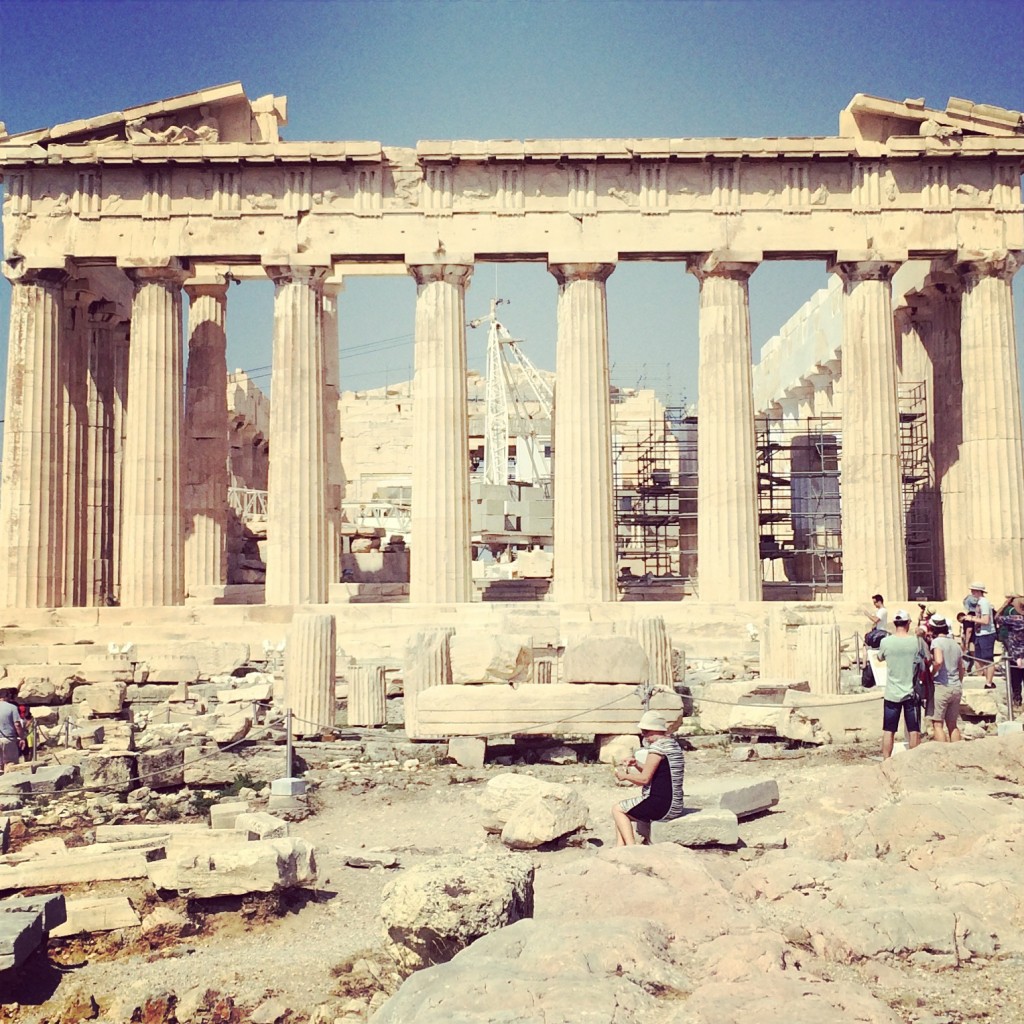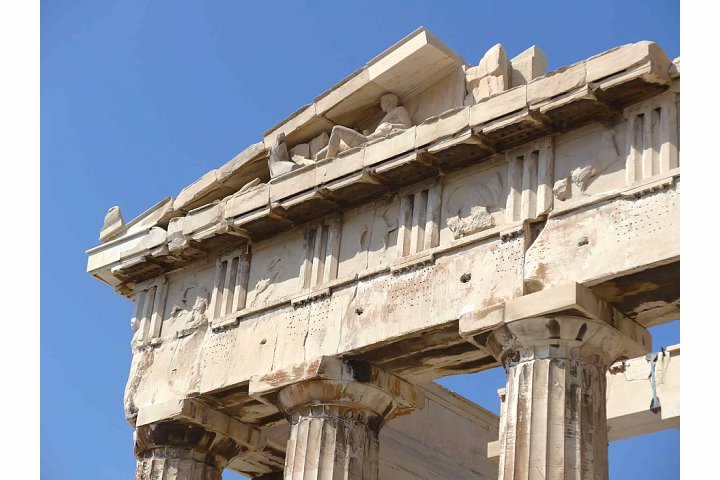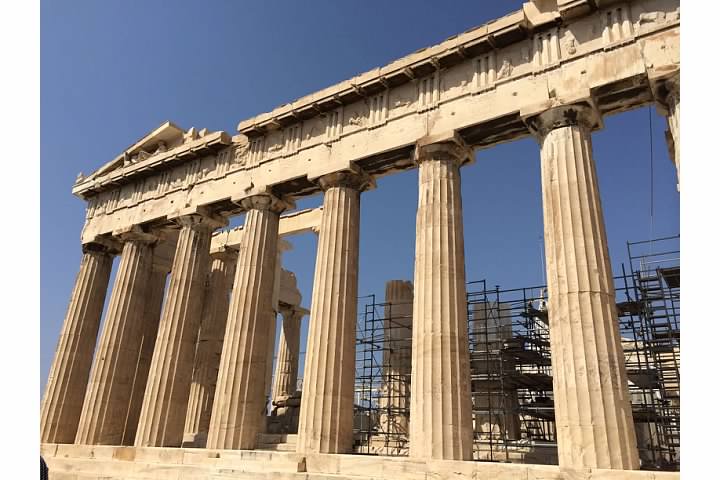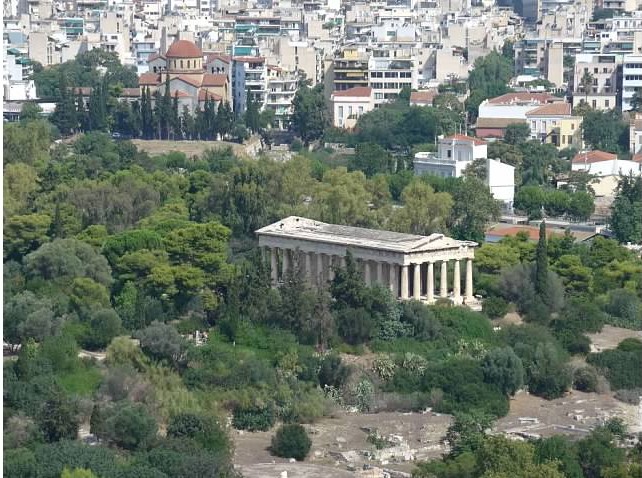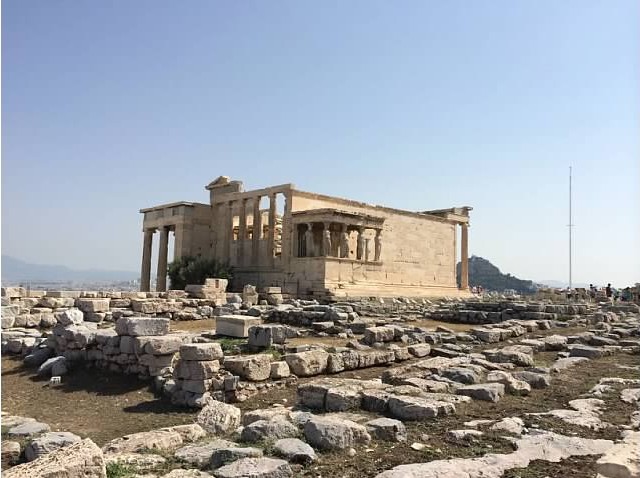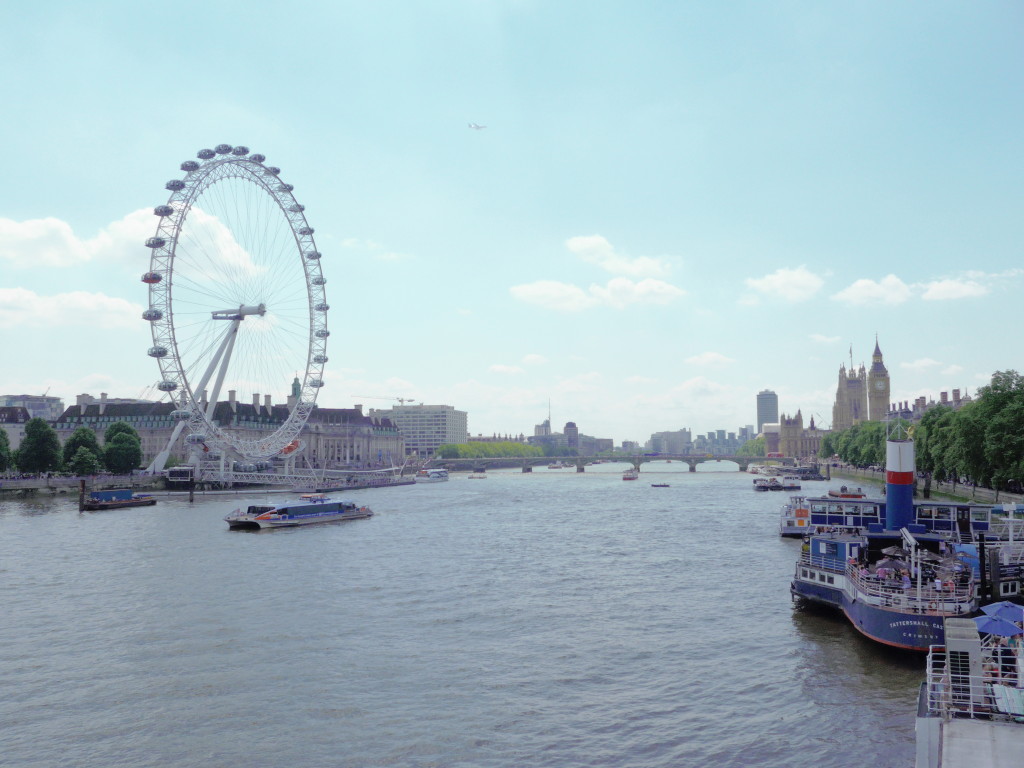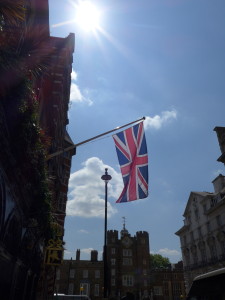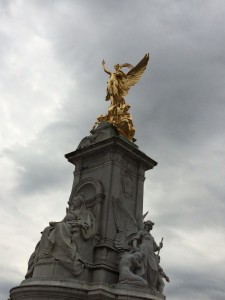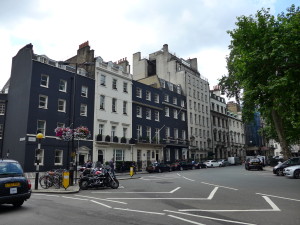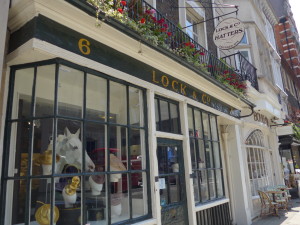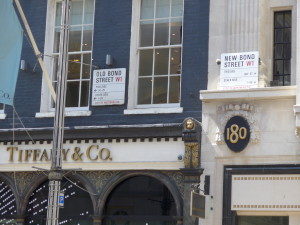I recently traveled to Greece for the first time and was completely blown away by the Acropolis in Athens. As an art history major in college, learning about the Parthenon and all of its High Classical attributes adorning the columns, pediments, and friezes, was paramount to a proper understanding of subsequent art and architecture. But that was looking at slides and reciting facts for an exam. Actually standing there, grasping the physicality of its scale, the enormity of its impact on Ancient Greece, is an entirely different experience. Taking fifteen years to construct, the Parthenon, a temple dedicated to the goddess Athena, was completed around 432 BC. In the centuries to follow the monument witnessed wars and changing reigns, suffered collateral damage from a cannon blast, lost marbles from looters, and served as a temple, a mosque, and a church. Today, the Parthenon remains (albeit partially) an emblem of Greek mythology, of Western civilization, a pinnacle of classical Greek architecture, and a symbol of the ideals of democracy, order, and philosophy. These pillars are preserved to remind us of an era that fostered the ideas we still reference today – the Socratic method, the Pythagorean theorem, and Plato’s Republic to name a few.
This and the other incredible temples on the Acropolis were and are undoubtedly architectural wonders. Part of the mastery and perfection of the Parthenon, though, lies in the imperfections – the optical illusion of straight lines and right angles actually comes from the slight curving and tapering of each column, deliberate imprecisions to make the temple appear lighter and more beautiful.
When old age shall this generation waste,Thou shalt remain, in midst of other woeThan ours, a friend to man, to whom thou sayst,“Beauty is truth, truth beauty,” – that is allYe know on earth, and all ye need to know.– John Keats Ode on a Grecian Urn, Line 46-50
